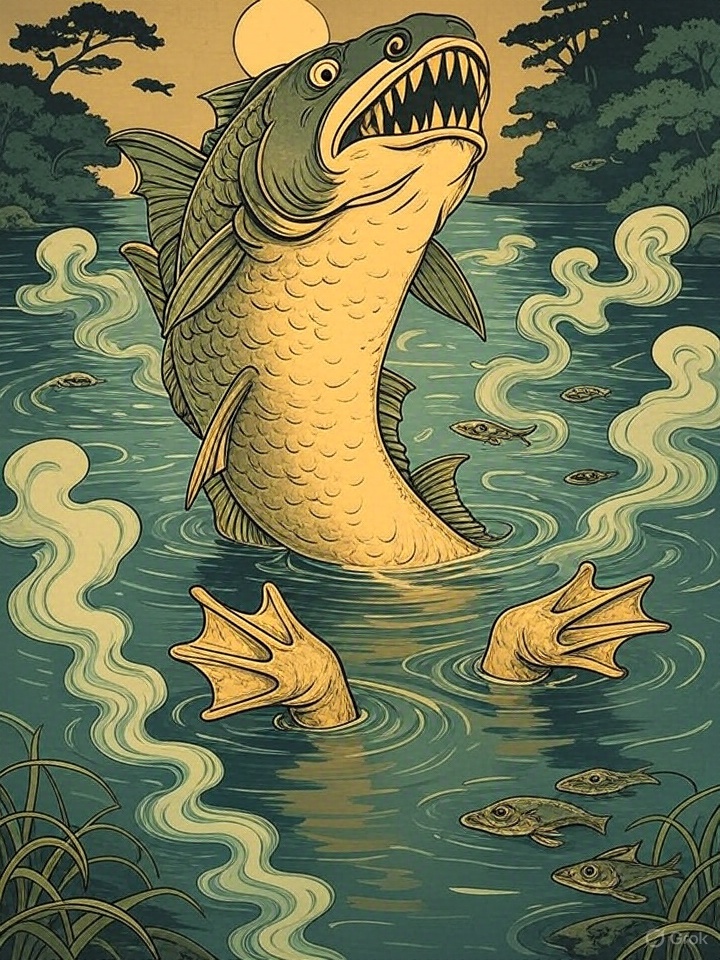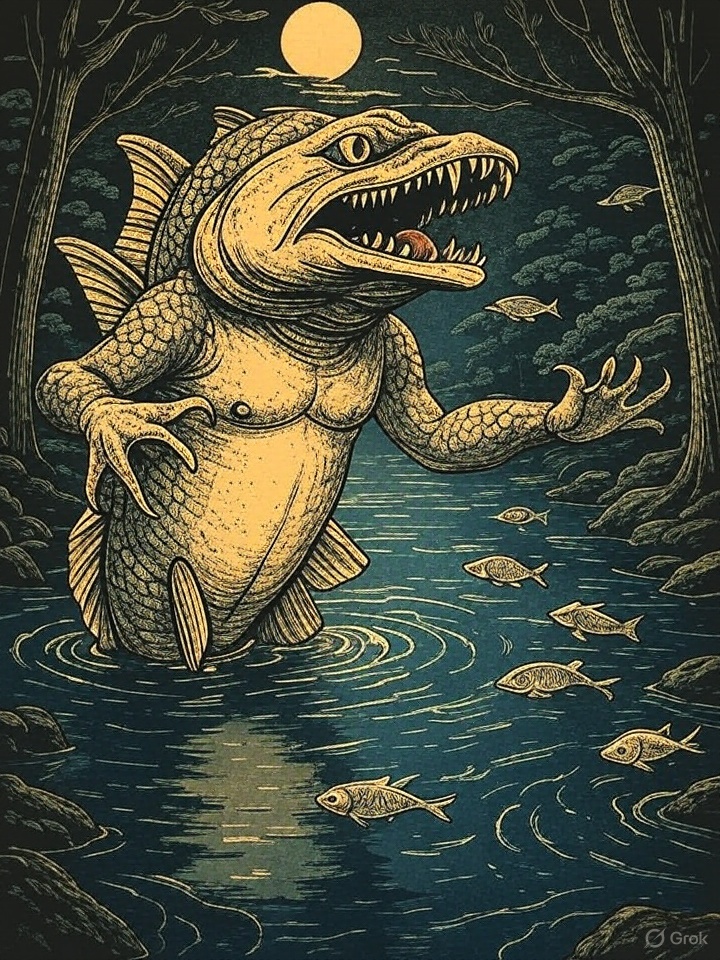Name Meaning
Overview
\n
Gangi-kozō (岸小僧) translates to “Pier Boy” or “Harbor Lad,” a yokai known for haunting waterside areas and devouring fish.
- Gangi = steps leading into water or harbor landing
- Kozō = young boy or child spirit
Origin
- Appears in folklore near harbors, piers, and fishing towns in coastal Japan.
- May originate as a cautionary tale to keep children away from dangerous waters.
- Sometimes described in fishermen’s tales as a supernatural cause of missing catches.
Appearance
- Appears as a small, slippery, child-like figure with wet skin and bulging eyes.
- May resemble a kappa or water sprite, with scales or webbed fingers and toes.
- Occasionally shown wearing a torn kimono soaked from the river.
Behavior & Myths
- Feeds primarily on fish, stealing them from nets, traps, or boats.
- Rarely interacts with humans unless provoked or seen alone by the water.
- Sometimes blamed for accidents or slippery piers due to its playful mischief.
Symbolism
- Represents the mysterious and untamed nature of Japan’s waterways.
- Acts as a protector of aquatic creatures or a punisher of overfishing.
- Embodies local fears of drowning, isolation, and unseen dangers near water.



